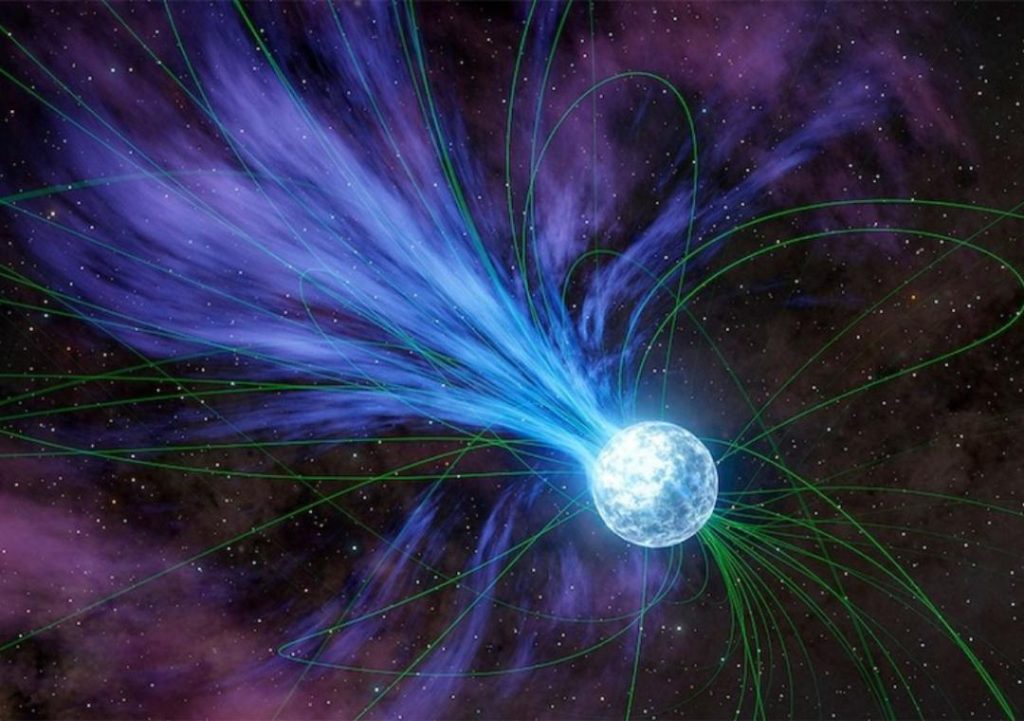
Gold & Platinum Created through Neutron Stars’ Explosions: Study
For centuries, humans have been fascinated by the origin of precious metals like gold and platinum. Where did these shiny elements come from? Scientists have been trying to answer this question for years, and now, thanks to a groundbreaking study, we may have the answer. According to researchers, magnetars or highly magnetized neutron stars are responsible for creating these elements in a cosmic event over 20 years ago.
In a recent study, led by Columbia University student Anirudh Patel, scientists discovered that magnetars exploded and released flares that contained gold and platinum. These explosions, which occur approximately once per decade in the Milky Way and annually across the observable universe, played a crucial role in the creation of these precious metals.
So, how did this happen? To understand the process, let’s take a step back and explore the life cycle of magnetars and neutron stars.
The Life Cycle of Magnetars and Neutron Stars
Magnetars are a type of neutron star, which is formed when a massive star runs out of fuel and collapses in on itself. During this collapse, the star’s core becomes incredibly dense, with the density of a sugar cube that weighs as much as a mountain. This density creates an incredibly strong magnetic field, which is what sets magnetars apart from other neutron stars.
Neutron stars are incredibly powerful objects, with magnetic fields that are trillions of times stronger than those on Earth. They are also incredibly hot, with surface temperatures reaching as high as 500,000 degrees Celsius. These intense magnetic fields and heat cause the neutron stars to spin rapidly, sometimes at speeds of hundreds of times per second.
The Explosions that Created Gold and Platinum
The study, which was published in The Astrophysical Journal, reveals that magnetars exploded in a massive event over 20 years ago, releasing flares that contained gold and platinum. This explosion was so powerful that it released an enormous amount of energy, equivalent to billions of times the energy released by the sun.
As the magnetar exploded, it released a massive amount of energy in the form of gamma rays, X-rays, and ultraviolet radiation. This energy was absorbed by nearby material, causing it to heat up to incredibly high temperatures. At these temperatures, the material was able to create gold and platinum through a process known as nucleosynthesis.
Nucleosynthesis is the process by which atomic nuclei are created through the fusion of smaller nuclei. In the case of gold and platinum, this process involves the fusion of smaller nuclei to create the heavier elements. The intense heat and energy released during the magnetar explosion provided the perfect conditions for this process to occur.
Implications of the Study
The study has significant implications for our understanding of the origin of precious metals. For centuries, humans have been fascinated by the value and rarity of gold and platinum. Now, we know that these elements were created through a cosmic event that occurred over 20 years ago.
This discovery also sheds new light on the origins of other elements on Earth. Many elements, including those found in our planet’s crust, were created through the explosion of magnetars and other neutron stars. This study provides a glimpse into the incredible power and complexity of the universe, and the ways in which it has shaped the elements that make up our world.
Conclusion
The study of magnetars and neutron stars has long been a fascinating area of research, and this latest discovery is a significant breakthrough. By understanding how these objects create precious metals like gold and platinum, we gain a new appreciation for the incredible power and complexity of the universe.
As we continue to explore the mysteries of the cosmos, we may uncover even more surprising secrets about the origins of the elements that make up our world. One thing is certain, however – the universe is full of incredible surprises, and the study of magnetars and neutron stars is just the beginning.






